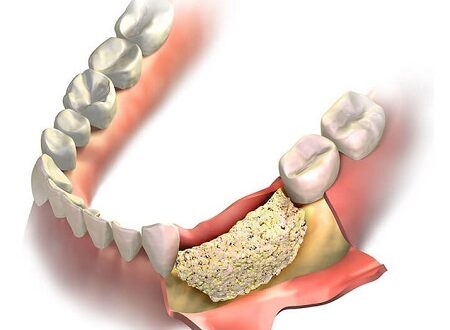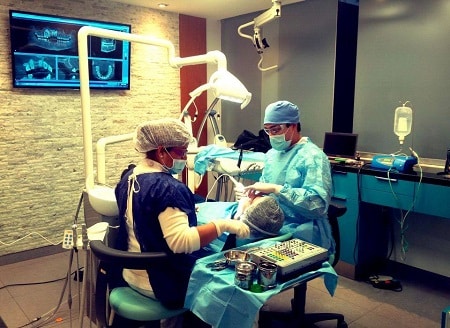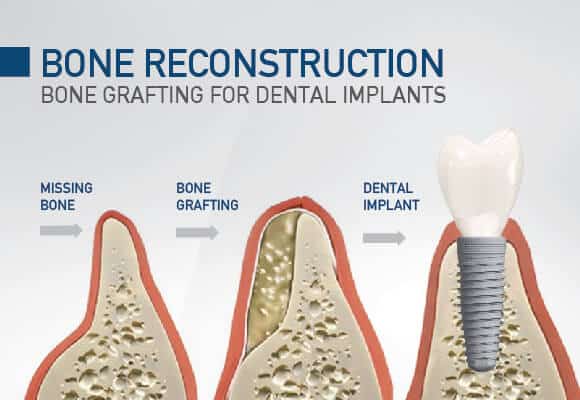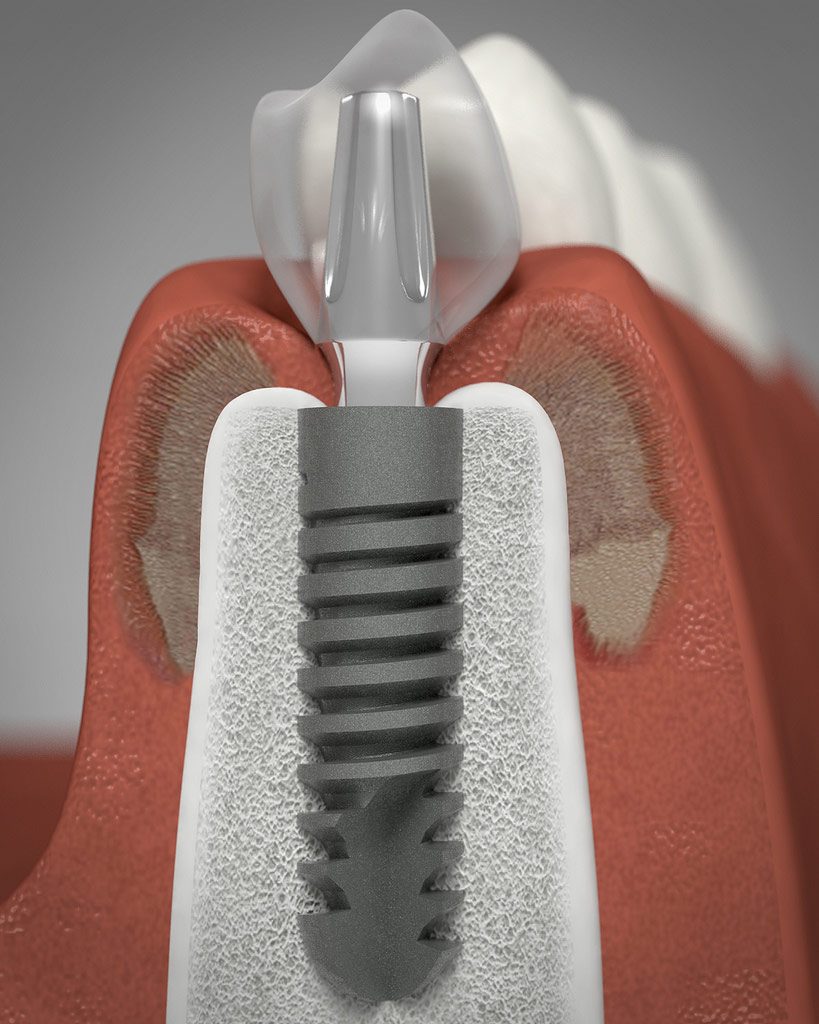
July 16, 2022
Bone Graft & Dental Implants Lloyd|bone graft, dental implants, dental surgery, lima peru dentist, tissue regeneration
A bone graft procedure is a bone regeneration treatment. Our specialist implantologists and periodontist use this technique to correct bone defects, regenerate lost bone, or gain bone height and width to safely place dental implants.
When jaw bone is resorbed, like after an extraction or if a tooth has been missing for a long period, dental implants cannot always be placed without first doing a bone graft. This is used to fill the space left by the missing tooth. The objective of this treatment is to recover lost bone so that dental implants can be safely placed.
What is a bone graft?
Bone grafting is used to help the body regenerate lost bone.

Our modern and advanced dental clinic, equipped with 3D x-rays and 3D CAD CAM
The bone graft is a regenerative treatment performed when the surgeon detects the jaw bone is not sufficient to anchor and hold a dental implant. Maybe it is too thin, too soft, or there is simply not enough bone.
What is bone loss?
Bone loss is mainly due to periodontal diseases, infections, or the loss of the tooth itself. The longer a space remains open and an implant is not placed after losing a tooth, the bone deteriorates.
You start to lose bone once a tooth is removed and no further action is taken.
Where is the bone taken from for a bone graft?
The techniques and materials used for bone graft have advanced enormously in recent years.
Today, it is not necessary to remove bone from other parts of the body. Happily, fully synthetic and biocompatible bone graft material and techniques have been developed. These are very safe, proven over the long term, and offer extremely successful results.
Consequently, a bone graft helps regenerate and heal the bone where a tooth is lost or needs to be removed.
When should I consider a bone graft?
Bone grafts are not necessary for every implant surgery. However, they are essential for some cases.
The main cases in which it is necessary to do a bone graft include:
- For alveolar preservation. This means that we want to maintain the bone dimension of the alveolar ridge after extracting a tooth.
- To fill bone defects that exist in the area where a titanium implant is to be placed.
- In maxillary sinus lift techniques to achieve bone height in posterior areas.
- To gain bone width and height in any area of the mouth.

When we lose a tooth, the socket begins to lose volume and the remaining bone reabsorbs over time.
For this reason, to maintain bone volume and good oral health, we recommend using a bone graft to fill the space left by any missing tooth.
Synthetic bone makes it possible to repair any bone defect in the area where we want to place a dental implant.

Bone must integrate to the threads of the a dental implant to ensure a successful treatment.
Bone width, height, and quality to ensure success
As previously mentioned, bone grafts are used to gain bone volume, width, and height.
If you have a good natural bone level for dental implants, it is important to take advantage of it. This is essential because an ideal bone height, width, and quality (density) considerably improves the success rate of dental implant placement.
How can I avoid bone loss?
To avoid bone loss, you must quickly replace lost teeth with dental implants.
Another way to prevent bone loss is to perform periodic dental checkups. This includes regular, professional cleanings and hygiene treatments. In other words, your dental hygiene and brushing habits can affect your entire health.
Where does the bone graft come from?
Synthetic bone is a very safe and biocompatible material that has been proven over many years to be extremely successful for long term bone regeneration. A synthetic bone graft is fast, painless, and healing time is short.

How is a bone graft intervention Done?
- Firstly, we begin with local anesthesia and freezing, or numbing of the area to be treated. We can also offer oral sedation so you are totally relaxed and comfortable during treatment.
- Then, the area where we want to gain bone is accessed through a tiny flap.
- The next step is to place the bone material into the empty space. A dental implant is placed at the same time when the conditions are adequate and it is safe to do so.
- The bone graft and implant are stabilized by means of a protective membrane barrier, used for greater healing and to seal the bone inside.
- Finally, the flap will be closed with the use of sutures and the healing period takes between three and four months. Once this time has passed, you return for the final stage and have the tooth placed on the implant post.
SOUNDS GOOD? SCHEDULE A CONSULTATION
Bone grafts are simple, yet delicate treatments. We have two specialist surgeons in our clinic all week. So, if you are interested in dental implants and think you might need a bone graft, please contact us.
We are also on WhatsApp for additional information or to schedule an appointment.



Comments
Sorry no comment yet.